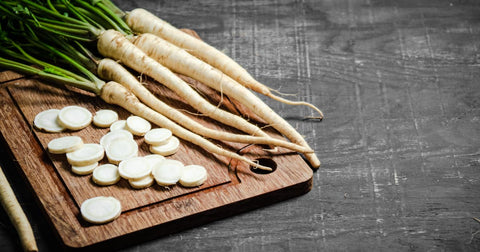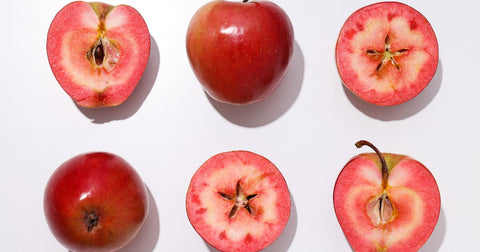Parsnips, with their creamy white color and sweet, nutty flavor, are a versatile root vegetable often overlooked in modern kitchens. But these humble vegetables boast a rich history and a wealth of nutritional benefits. If you're curious about adding parsnips to your diet, this article will answer your questions about "what are parsnips," their taste, nutrition, and how to cook them.

What is Parsnip? A Botanical Overview
What is parsnip? It's a root vegetable belonging to the Apiaceae family, which also includes carrots, celery, and parsley. Parsnips are typically harvested in the fall and winter, and their flavor intensifies after the first frost.
What Do Parsnips Taste Like? A Sweet and Earthy Flavor
What do parsnips taste like? They have a sweet, slightly nutty flavor with earthy undertones. Their sweetness intensifies when roasted or cooked, making them a delightful addition to various dishes. Many describe their taste as a cross between a carrot and a potato, but with a distinct sweetness.
Parsnip Nutrition: A Nutrient-Dense Vegetable
Parsnip nutrition is impressive. They are a good source of:

-
Fiber: Essential for digestive health and regularity.
-
Vitamin C: A potent antioxidant that supports immune function.
-
Vitamin K: Important for blood clotting and bone health.
-
Folate: Crucial for cell growth and development.
-
Potassium: Helps regulate blood pressure.
-
Manganese: Plays a role in bone formation and metabolism.
Benefits of Parsnips: Enhancing Your Health
The benefits of parsnips extend beyond their delicious taste. They offer numerous health advantages:
-
Improved Digestive Health: The high fiber content promotes regular bowel movements and supports a healthy gut.
-
Boosted Immunity: Vitamin C strengthens the immune system, helping to protect against infections.
-
Enhanced Bone Health: Vitamin K and other minerals contribute to strong bones.
-
Heart Health Support: Potassium helps regulate blood pressure, promoting cardiovascular health.
-
Rich in Antioxidants: Parsnips contain antioxidants that protect cells from damage caused by free radicals.
How to Cook Parsnips: Culinary Versatility
How to cook parsnips? They are incredibly versatile and can be prepared in numerous ways:

-
Roasting: Roasting parsnips brings out their natural sweetness and creates a caramelized texture.
-
Mashing: Mashed parsnips are a delicious alternative to mashed potatoes.
-
Soups and Stews: Parsnips add depth and sweetness to soups and stews.
-
Sautéing: Sautéed parsnips make a flavorful side dish.
-
Adding to Purees: Parsnips can be pureed and added to other vegetable purees for added sweetness.
Food Intolerance and Parsnips: Potential Sensitivities
While parsnips are generally well-tolerated, some individuals may experience digestive issues due to food intolerances or sensitivities.
Food Sensitivity Test Kit: Identifying Triggers
If you suspect a food intolerance, a food sensitivity test kit can help identify specific triggers. By eliminating or limiting these foods, you can improve your digestive health and overall well-being.
Key Takeaways:

-
Parsnips are a sweet and nutritious root vegetable with numerous health benefits.
-
They are versatile and can be prepared in various ways, from roasting to mashing.
-
If you experience digestive issues after consuming parsnips, consider a food sensitivity test.
Remember, this article is intended for informational purposes only and should not be considered a substitute for professional medical advice. If you have any concerns about your health or dietary choices, consult a qualified healthcare professional.
Frequently Asked Questions:
1. Are parsnips and carrots related?
Yes, parsnips and carrots belong to the same plant family, Apiaceae. They share a similar shape and texture, but parsnips are typically white and have a sweeter, nuttier flavor.
2. How do I choose the best parsnips at the grocery store?
Look for firm, smooth parsnips without any soft spots or blemishes. Smaller to medium-sized parsnips tend to be sweeter and less woody than larger ones.
3. Do I need to peel parsnips before cooking them?
It's generally recommended to peel parsnips, especially if they are older or have a tough skin. However, if they are young and tender, you can leave the peel on after thoroughly washing them.
4. Can I eat parsnips raw?
Yes, you can eat parsnips raw. They have a slightly crunchy texture and a mild, sweet flavor. They can be grated and added to salads or used as a crudité.
5. I have a history of allergies to other root vegetables. Should I be cautious about eating parsnips?
If you have known allergies to other root vegetables in the Apiaceae family, such as carrots or celery, it's best to exercise caution when trying parsnips. Start with a small amount and monitor for any allergic reactions. If you have concerns, consult with an allergist or healthcare professional.


.png?v=1737390083)
.png?v=1737187409)


